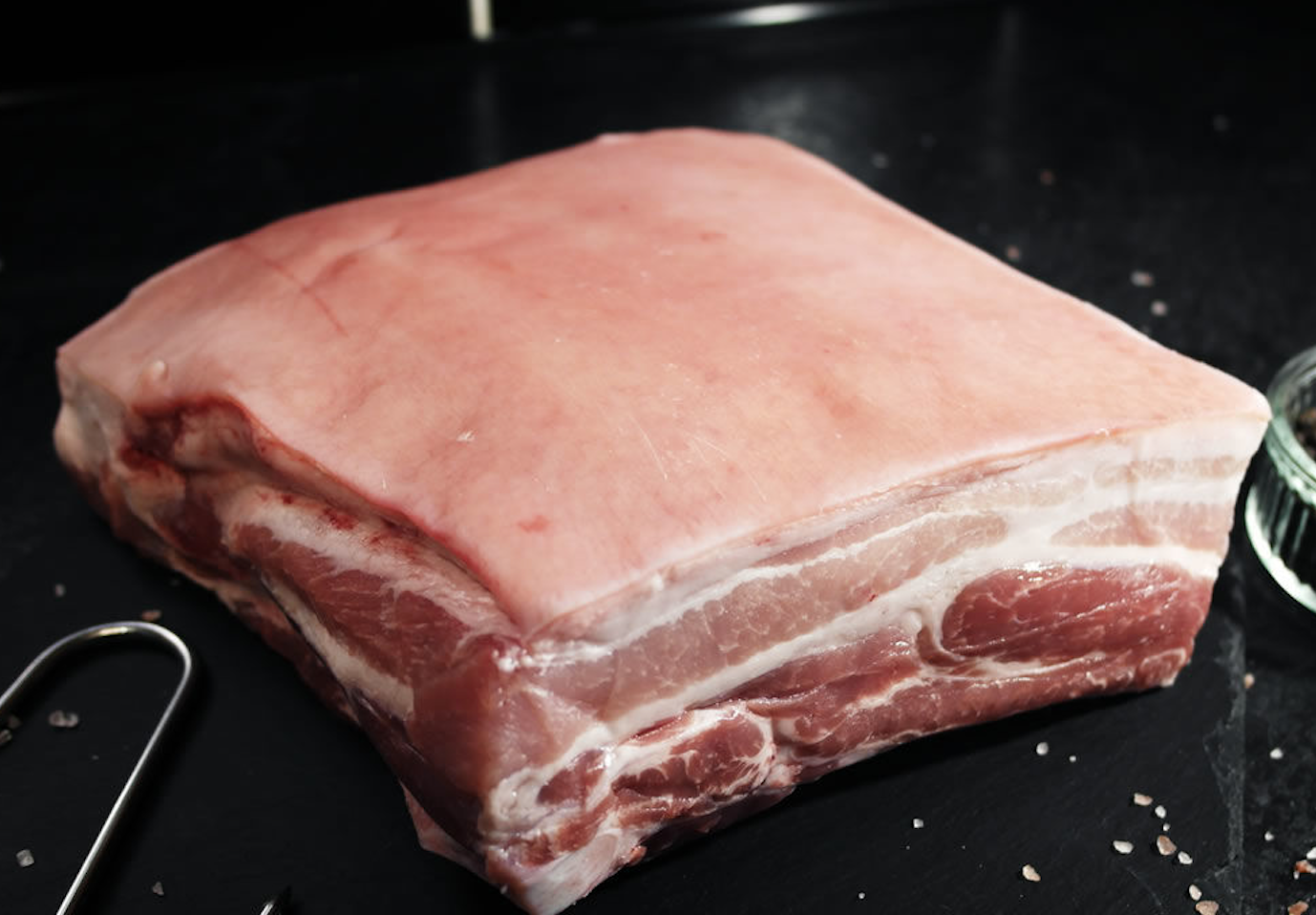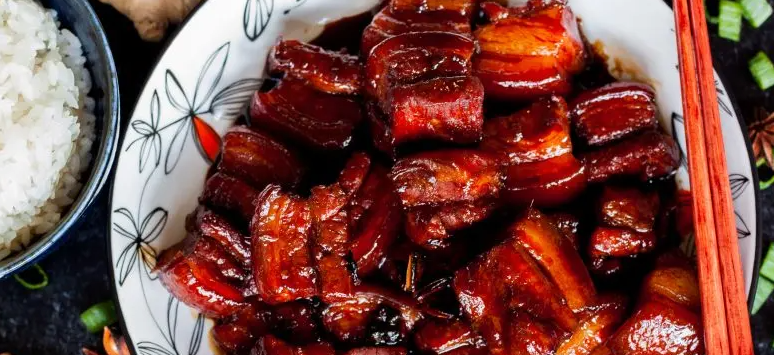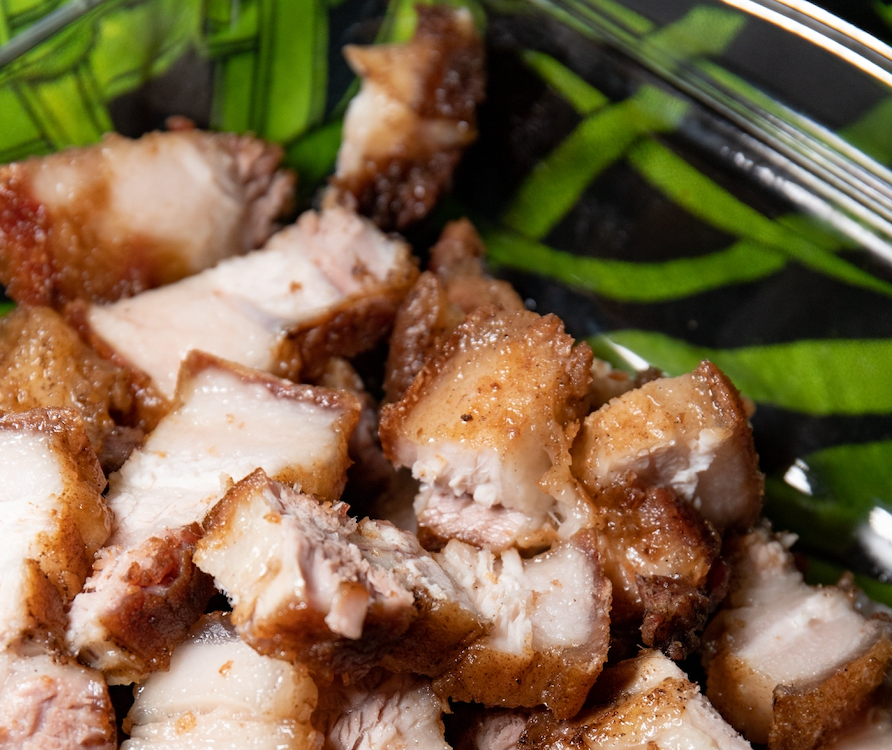Chinese Pork Belly Recipes
Chinese food has captured the hearts and taste buds of many across the globe with its fresh and vibrant ingredients and dishes that are as much a feast for the eyes as they are for the palate. In this melting pot of flavours, pork is a star ingredient and no other cut is more revered than belly pork. With its perfect balance of meat and fat, pork belly is a firm favourite in Chinese cooking.
Quality Matters
At Make It Scotch we understand that the art of good cooking is about respecting the ingredients, knowing their origins, and bringing out their best qualities. Our Specially Selected Pork is the perfect partner for creating outstanding Chinese dishes from red braised pork belly (Hong Shao Rou), to sticky Chinese pork belly, twice-cooked pork belly or slow-cooked pork belly slices in Chinese noodle soup.
Whether you are a seasoned foodie or a curious cook, get ready to dive into the delectable world of Chinese pork belly recipes. We will explore traditional favourites, offer tips on getting that perfect cook, and maybe even try a few creative twists.
So, what are you waiting for? Let's get cooking!
Why is Pork Belly so Popular in Chinese Cooking?
Pork belly's popularity in Chinese cooking can be attributed to several key factors:
- Flavour and Texture: The balance of meat and fat in pork belly makes it incredibly succulent and tender. When cooked properly, the fat renders down, infusing the meat with deep flavour and creating a melt-in-your-mouth texture that is highly prized in Chinese cuisine.
- Culinary Versatility: This cut of pork is incredibly versatile. It can be used in a wide range of Chinese dishes, from slow-cooked braises and stews to quick stir-fries, soups, noodle dishes and roasted meals. Each cooking method brings out a different aspect of the pork belly’s flavour and texture, making it a staple ingredient for various recipes.
- Cultural Significance: Pork has been a staple in Chinese diets for thousands of years, and pork belly, in particular, holds a special place in many traditional dishes. It is often featured in festival meals and special occasions, symbolising wealth and prosperity. This cultural significance has helped maintain its popularity through generations.
- Historical Abundance: Historically, pigs were a common livestock animal in China, as they are efficient to raise and provide a substantial amount of meat. Pork belly, as a part of the pig, was readily available and became integral to the everyday diet, as well as to special occasions.
- Economic Factors: For many years, pork was more economically accessible than other meats in China. Pork belly, offering both meat and fat, was especially valued for its ability to add rich flavour and calories to a variety of dishes, making it a preferred choice for many families.
- Regional Variations: Different regions in China have developed their unique ways of preparing pork belly, reflecting the diversity of Chinese cuisine. This has helped to maintain its popularity, as it can be adapted and transformed according to regional tastes and cooking styles.

The combination of these factors – taste, versatility, cultural importance, historical abundance, affordability, and regional diversity – has solidified pork belly's status as a much-loved and indispensable ingredient in Chinese cooking.
The Best Way to Prepare Pork Belly
Many people shy away from cooking pork belly because they think it is a complicated cut of meat. In reality, preparing pork belly to achieve the best flavour and texture is relatively straightforward and it only involves a few key steps.
The method can vary depending on the specific recipe, but here's a general approach that works well for most preparations:
- Select High-Quality Pork Belly: Start with a good quality pork belly. Look for a piece that has a nice balance of meat and fat. The fat should be white and firm, and the meat should have a deep pink colour.
- Prepare the Meat: If your recipe requires, remove the pork belly skin or score it. Scoring the skin helps the fat render more evenly and can make the skin crispier.
- Season: Season the pork belly generously. This can be as simple as salt and pepper, or you can use a mix of spices and herbs according to your recipe. For many Chinese dishes, a combination of light or dark soy sauce, Chinese five-spice powder, garlic, and ginger is used.
- Marinate (Optional): For added flavour, marinate the pork belly. A typical Chinese marinade usually includes dark or light soy sauce, Shaoxing rice wine, brown sugar, oyster sauce and aromatics like garlic, ginger, and green onions. Marinate for at least a few hours, or overnight if possible.
- Slow Cooking: Slow cooking is a fantastic way to prepare pork belly, as it renders the fat and makes the meat tender. You can braise it in a flavourful liquid, like a mix of soy sauce, water, sugar, and spices, for a few hours until it's tender.
- Roasting: Alternatively, you can roast it at a low temperature (around 275°F or 135°C) for a few hours. This method is great for achieving tender meat with a crispy exterior.
- Crisping the Skin: If your dish requires crispy skin, the final step often involves high heat. After the slow cooking, increase the oven temperature or use a grill to crisp up the skin. Keep a close eye on it to prevent burning.
- Another method is to start with a high-heat sear or roast to crisp up the skin, then slow-cook the meat to tenderness.
- Resting: Once cooked, let the pork belly rest for about 10-15 minutes before slicing. This allows the juices to be redistributed, ensuring the meat is juicy and flavourful.
- Slicing and Serving: Slice the pork belly according to your recipe. It can be cut into thin slices, chunks, or cubes. Serve as desired, whether it's part of a larger dish or as the main course.

Remember, the best way to prepare pork belly can vary greatly depending on the specific cuisine and recipe you are following. The method above is a general approach and can be adjusted to suit your particular dish.
Classic Chinese Pork Belly Recipes
There are many Chinese pork belly dishes to choose from but here are two absolute favourite recipes that everyone should try and give a go preparing.
➡️ Recipe 1: Red Braised Pork Belly (Hong Shao Rou)
This dish is a beloved classic in Chinese cuisine, known for its rich flavours and tender texture. Originating from the Jiangsu region, Hong Shao Rou has become a symbol of comfort and family, often served during special occasions and family gatherings.
Ingredients:
- 500g pork belly, cut into 2-inch cubes or bite-sized chunks
- 2 tablespoons vegetable oil
- 2 tablespoons sugar (rock sugar is traditional)
- 3 tablespoons Shaoxing wine or Chinese cooking wine
- 2 tablespoons light soy sauce
- 1 tablespoon dark soy sauce
- 2 cups water
- 3 slices ginger
- 2 cloves garlic, lightly smashed
- 1-star anise
- 1 cinnamon stick
Preparation:
- Heat the oil in a pan. Add the pork belly and fry until golden brown.
- Add the sugar, stirring until it melts and coats the pork.
- Stir in the Shaoxing wine, soy sauces, and water. Add ginger, garlic, star anise, and cinnamon.
- Bring to a boil, then reduce to a simmer. Cover and cook for about 1.5 to 2 hours, until the pork is tender and the sauce has thickened.
- Serve with steamed rice and simple Chinese greens.

➡️ Recipe 2: Crispy Pork Belly (Siu Yuk)
A staple in Cantonese cuisine, Siu Yuk is loved for its perfectly crispy skin and juicy meat. It is a popular dish in southern China and Hong Kong, often served at celebrations and dim sum restaurants.
Ingredients:
- 1kg pork belly, skin on
- 2 teaspoons salt
- 1 teaspoon sugar
- 1 teaspoon Chinese five-spice powder
- 1 teaspoon white pepper
- 1 tablespoon rice vinegar (for brushing the skin)
Preparation:
- Prick the skin of the pork belly all over with a skewer or fork.
- Rub the meat (not the skin) with salt, sugar, five-spice powder, and white pepper.
- Place the pork belly, skin-side up, in the refrigerator, uncovered, for 12-24 hours to dry out the skin.
Roasting:
- Preheat your oven to 350°F (180°C).
- Brush the skin of the pork belly with vinegar, then sprinkle a thin layer of salt over it.
- Roast for about 1.5 hours. For the last 15-20 minutes, increase the heat to 450°F (230°C) to crisp the skin.
- Let it rest, then cut into bite-sized pieces.
- Cutting tip: Place the skin side down. Cut the meat part first and then press the knife to break the crispy rind.

These two popular Chinese pork belly recipes are only a drop in the ocean in the myriad of different ways pork belly can be prepared. The foundation of any standout meal is the quality of ingredients. Fresh, premium produce needs less dressing up allowing the true taste of the food to shine through.
Where Can I Buy Specially Selected Pork Near Me?
If you are looking for premium quality pork belly, look no further than Specially Selected Pork from Scotland. It is recognised as the flagship brand of the Scottish pork industry and it is sought after worldwide for its exceptional quality and standard.

The great news is that with the help of our user-friendly map, you can now easily access Specially Selected Pork where you live. Simply enter your postcode, and the map will show you the nearest Scotch meat supplier in your vicinity.
Supporting Scottish Farmers
When you choose Specially Selected Pork you are not just buying quality meat but you are also backing a network of exceptional Scottish farmers who are deeply rooted in generations of traditional farming and are the custodians of Scotland's agricultural heritage.
Their unwavering commitment to maintaining the highest standards of quality and excellence distinguishes the Scottish red meat industry on a global stage.
What's The Scotch Difference?
Let us take you on a journey into what makes Scotch Beef, Scotch Lamb and Specially Selected Pork so special, and how we produce such high-quality meat renowned and enjoyed worldwide.


- © MakeitScotch 2025
- Cookies
- Privacy
- Terms of Use
Site by Art Department
